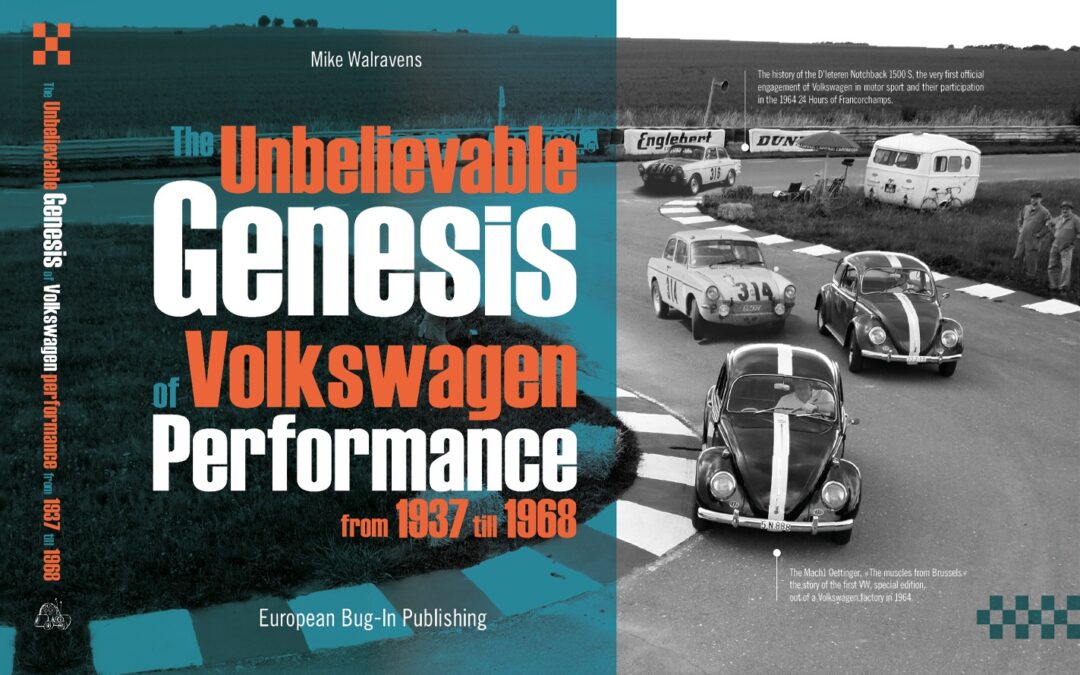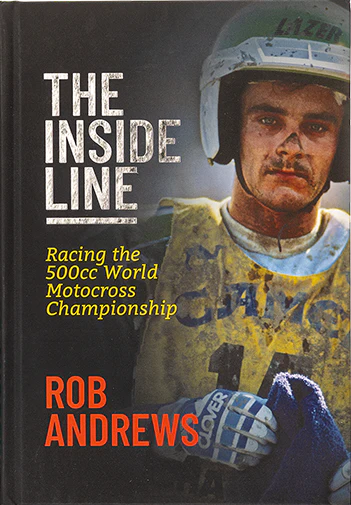
A unique, detailed, and comprehensive first-hand account of life as a professional racer competing and contending in the 500cc world motocross championship.
Tracing the journey of Great Britain’s Rob Andrews, from unremarkable amateur, through to factory Kawasaki rider, 500 GP contender, and member of Great Britain’s 1985 Motocross des Nations team, The Inside Line goes where no book has gone before: deep into the heart of life as a professional grand prix motocross racer.
Superbly illustrated with nearly 400 incredible images from some of the most acclaimed photographers in the industry, The Inside Line takes the reader on a fascinating odyssey of insight and intrigue.
Learn the inner workings of the grand prix motocross world, get answers to long-pondered questions, and discover things you never knew. There are facts that will surprise you, anecdotes that will make you laugh, and brutally honest, never-before-published information.
Find out how it felt to race against motocross legends on the world’s most famous and revered grand prix circuits. Discover what it was like to race a full-factory 500 for Team Kawasaki. Learn how the riders on the nomadic grand prix circuit lived, traveled, trained, and practiced while on the road.
Join Rob as he guides you – in his own words – through the highs and the lows, the adrenaline and the sacrifice, the jubilation and the occasional devastation of his extraordinary journey from raw novice all the way to the biggest stage of all: the 500cc world motocross championship.
And by the end you’ll understand just what it was like – and just what it took – to be a grand prix motocross racer.
The Inside Line is a mammoth, heavyweight, 416-page, 93,000-word hardback book of uncompromising quality and detail.
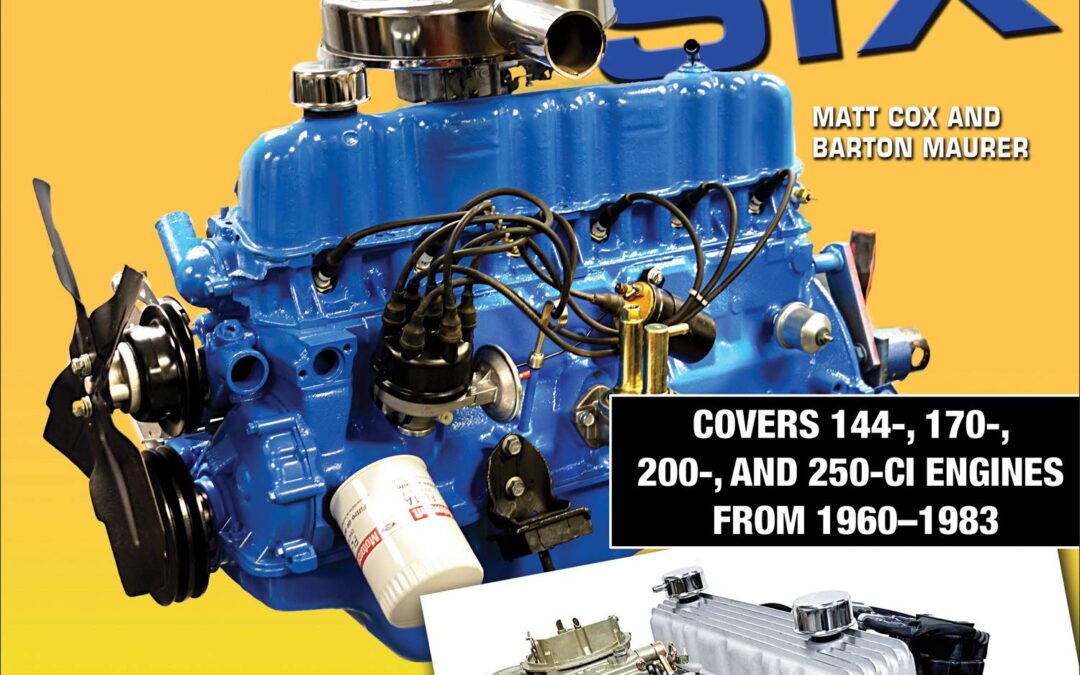
ebuild and modify your Ford inline six with help from the leading performance builders of these engines, Vintage Inlines!
Covering Ford’s small 6-cylinder engine made famous in Falcons, Comets, Mustangs, and many other models from the 1960s and 1970s, this book has everything you need to know from step-by-step rebuilding instructions to performance parts that will set you apart from the rest of the crowd. If this is your first engine build, you’ll be glad to know that every aspect of a complete rebuild is here. Starting with engine removal, you’ll learn all the different steps, including examination, machine work, reassembly, and reinstallation. The mystery is revealed on setting ring gap, checking valve-to-piston clearance, and even degreasing the camshaft for spot-on valve timing!
Whether it’s replacing the undersized and outdated 1-barrel carburetor or the original Load-O-Matic distributor, you’ll learn how to get the most from the engine that came as original equipment in literally millions of our favorite Ford vehicles. With the information in this book, you’ll learn how to add a 2-barrel carburetor, electronic ignition, and even a header so you can have the smooth rumble of dual exhaust.
Congratulations on your decision to build and modify one of the most popular engines from some of the most popular cars in Ford’s long history with Ford Inline Six: How to Rebuild & Modify!
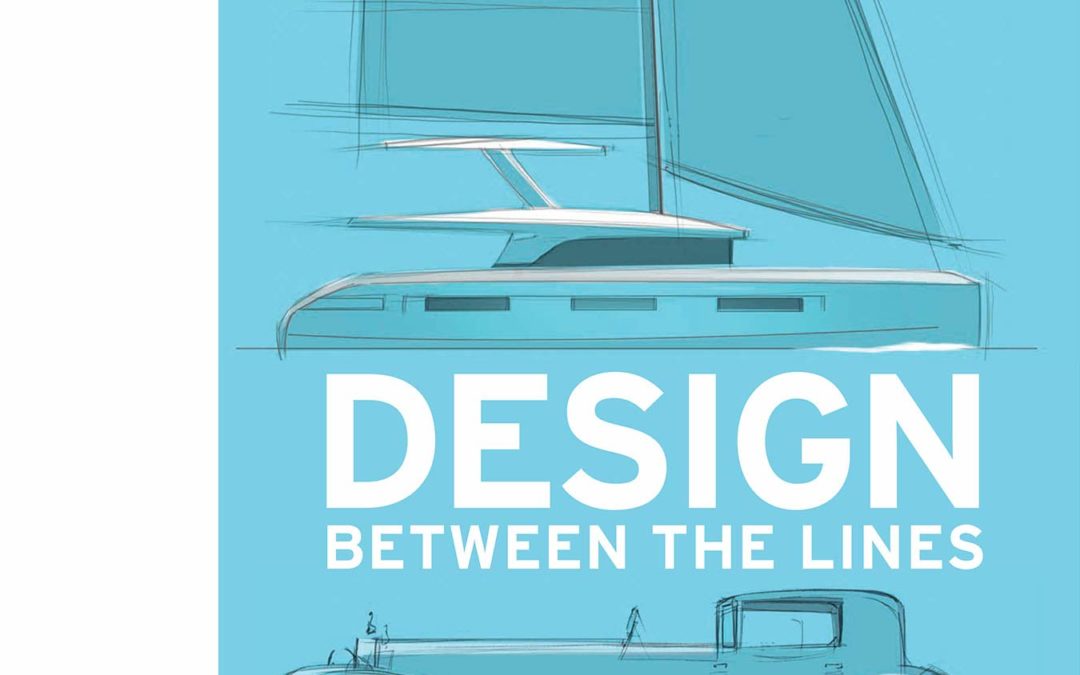
The car industry and the way in which cars are created have changed beyond all recognition over the last half-century. Automotive styling was once the grudging afterthought when the engineers had finished their work. Now, following a short flirtation with exotic Italian design houses, it has evolved into sophisticated design carried out by multitalented in-house teams honing carefully crafted brand identities.
One of the visionary designers at the forefront of that revolution has been Patrick le Quément. Most widely acclaimed for his 22 years in charge of Renault Design, resulting in such standout models as the Twingo, Scénic and Avantime, le Quément has enjoyed a 50-year career that has also taken in Simca, Ford and Volkswagen-Audi. In his foreword to the book, Stephen Bayley calls le Quément ‘perhaps the very most original designer working in the conservative car business at the turn of the millennium’. Some 60 million cars across the world now bear the unmistakable stamp of le Quément.
Design: Between the Lines is not a straightforward autobiography; rather, le Quément charts his journey through five decades of thoughts, actions, failures and successes. He offers fascinating commentaries on design and the creative process, and on some of the extraordinary automotive brands that make up our shared cultural heritage. As Bayley notes, for le Quément, design is ‘as much a matter of thinking as a matter of drawing’. On a broader, more philosophical level, le Quément also shares his views about life in general and that remarkable contraption called ‘the automobile’, which has so influenced the lives of millions of people the world over from the late 1800s to the present day.
Presented as a series of 50 brief essays or ‘perspectives’, le Quément’s thoughtful and astute observations from the street, from the design studio and from his seat in the boardroom give the reader a penetrating and often amusing insight into the high-level workings of a global industry, its triumphs and tragedies, and the foibles of the decision-makers responsible for running it. A lively complementary text by the automotive journalist Stéphane Geffray accompanies each of le Quément’s perspectives, and illustrations are provided by the automobile designer Gernot Bracht. Design: Between the Lines will appeal to all motoring fans and enthusiasts of good design. As Chris Bangle, the former Director of BMW Design, remarks: ‘Few car designers have had a career so filled with innovative successes that they have inspired a whole industry; fewer still have the skills to share it. Engaging and revealing, Patrick relates his personal experience and deep knowledge of car design in a very enjoyable manner.’

The brave efforts of the pilots and crew of the RAF during the Second World War are well-known but there was another body of aviators that played a significant role in the conflict – the men and women of the civilian airlines.
The British Overseas Airways Corporation (BOAC) was formed shortly after the outbreak of war in November 1939 by the amalgamation of Imperial Airways and British Airways. During the war BOAC operated as directed by the Secretary of State for Air, initially as the transport service for the RAF and with no requirement to act commercially. The inaugural BOAC had eighty-two aircraft, a large proportion of which were seaplanes and flying boats. With 54,000 miles of air routes over many parts of the world, ranging from the Arctic to South Africa, from the Atlantic coast of America to the eastern coast of India, the aircraft of the BOAC kept wartime Britain connected with its colonies and the free world, often under enemy fire. Over these routes, carrying mail, cargo and personnel, the men and machines of BOAC flew in the region of 19,000,000 miles a year.
There can rarely have been a moment, throughout the war, when aircraft of the British merchant air service were not flying somewhere along the routes, despite losses from enemy action. This book explores much of their war history between 1939 and 1944 (the year that marked the 25th anniversary of British commercial aviation), something of their lives and their achievements in linking up the battlefronts – at times cut off from any direct land or sea contacts with the Home Front – and in transporting supplies through the new, dangerous and often uncharted regions of the air. With the ‘Speedbird’ symbol or the Union Flag emblazoned on its aircraft the BOAC really did fly the flag for Britain throughout the wartime world.
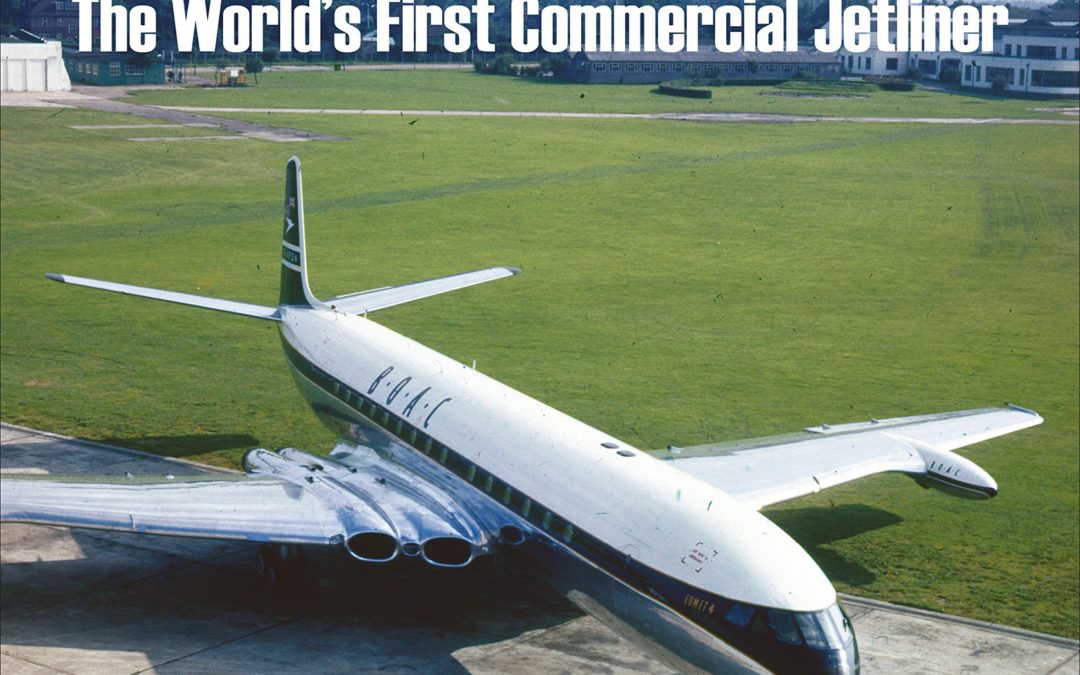
The world got a little smaller in July 1949 when the first jet-powered airliner took to the skies barely four years after the end of the Second World War.Not only was the de Havilland Comet 1 was a lot faster than previous airliners, it could fly higher and further. It was packed with new technology but, perhaps most importantly for those early passengers, it was a quiet, luxurious and even pleasant experience, something that could never be said for the noisy piston-engine aircraft that came before.The Comet’s leadership in jet travel for the future was assured until aircraft began crashing. The first ones were put down to pilot error but two disastrous events in 1954 grounded the fleet and Britain’s advantage over the rest of the world was lost. Boeing caught up with its ubiquitous 707 and the Comet was destined to become but a memory.However, rising from the ashes came a new Comet – one that was bigger and more powerful than before and designed for completely different roles. Where the first Comets had provided an expensive and plush way to travel for the rich few, the new Comet 4s carried more passengers to a multitude of destinations inevitably becoming key carriers for the early package holidaymakers. At the same time they became vital strategic transports for the RAF as the British Empire receded.This book tells the full story of the world’s first jet-powered airliner, from its remarkable beginnings, through its early flight trials program to its entry into service. The type’s military career is also covered, as is its construction; also included in this volume are details of the numerous variants produced and those still surviving as exhibits today. There are also twenty-four superb artworks by world-renowned aviation illustrator Juanita Franzi.

These Desired Things, Steve Matchett’s much anticipated fourth book, is a stimulating, philosophical offering; a tour de force in creative writing. Although, defining the book’s genre seems largely superfluous, for its immersive, lyrical text is part fiction, part memoire, part autobiography. Complete with a suitably insightful foreword by Manish Pandey (writer of SENNA – the movie) and with its chapters illustrated throughout by the visually enthralling artwork of Renée French, Matchett’s new book is both engaging and exceptionally pleasing on the eye.The chapters of the work are presented as a collection of eleven short stories: all of them varying in their individual plots, their settings and their style, yet all of them remain essential elements of the whole; for running through each is a series of subtle, uniting threads. And through Matchett’s captivating telling of these affectionate tales, the author’s (already renowned) written ‘voice’ attains a whole other level of intimacy: The reader feels truly bonded to the writer’s emotions.It is also encouraging to note, These Desired Things is no continuation of the author’s previous works: Matchett’s F1 trilogy stands complete. This latest book, therefore, represents a refreshing new mission. Indeed, by introducing to us his pair of delightful (if mysterious) fictional characters, creations so readily brought to life by the author in two of this book’s short stories – The Chestnut Tree and The Shadows Cast of Candlelight – it seems that Matchett is already laying out his plans for a future novel.Undoubtedly, the diversity of all eleven stories – and the inimitable style of the storytelling – is sure to introduce a whole new readership to Matchett’s writing. That said, the author has been most careful to include stories that will appeal to those already familiar with his earlier books – those readers with a knowledge and passion for Formula 1 motor racing. And, most likely, these same passionate readers will be moved to tears on reaching the closing lines of the book’s penultimate chapter, Breaking Bread with Ayrton Senna.Steve Matchett gives abridged readings of this truly atmospheric story during his public appearances, his after-dinner events. Now, however, for the first time in print, this most endearing homage to the fallen, three-time world champion driver, Ayrton Senna, is presented in its full, unabridged form.

f you are one of the millions of airline passengers who take to the air daily and have no idea how an airplane flies or how it is flown – but would like to find out – then How Airliners Fly is for you. It is written by an airline pilot who knows from first-hand experience those questions that are asked most frequently. He knows that for many it is an interest born of curiosity, and in some cases, caused by fear. In this revised third edition Julien Evans explains, in straightforward everyday language, about the airframe and the engines, the flight deck and the controls, how the airplane is flown and the routines followed. In fact, it explains everything the average passenger may wish to know.
“… balanced, informative, comprehensive, totally accurate and , most importantly, interesting.” – Pilot magazine
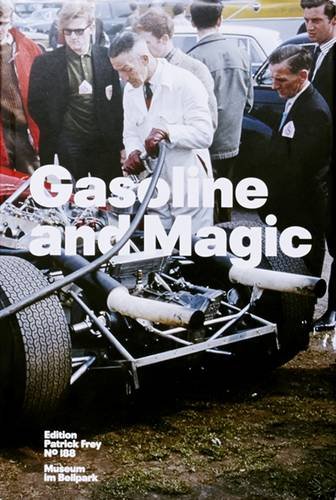
Everything about them is cool the baby-blue Porsche 917s, the Chevy Camaros, the striped overalls, the women in thick eyeliner and bell-bottoms, the girls
in crocheted bikinis at the finishing line. Taken by amateur photographers the world over, most never before published, the photographs in Gasoline and Magic were selected from the archives of Swiss filmmaker and collector Thomas Horat. Together they tell the story of the evolution of motorcar racing from the 1950s with such heroes as Gonzalez and Moss to the turbocharged chaos of the 1980s. While the amateurism is tangible, careful thought has gone into the composition of these photos, and the result is fascinating. Pop culture buffs and racing car enthusiasts who love the sport with their heart and soul will delight
in this publication published to coincide with the eponymous exhibition at the Museum Belpark Kriens, Switzerland.

Peter Bowers is a foremost aviation historian and author. His byline has appeared hundreds of times as Peter Bowers has written numerous books, articles, columns, and stories for a variety of aviation periodicals over the last 70 years! In the process, Bowers has acquired one of the world’s largest private collections of airplane photos and reference data. Authors and publishers worldwide draw from his research files. This particular book is a potpourri of Bowers’ writings, as his aviation historical columns have appeared in General Aviation News over past years. THIS BOOK INCLUDES 181 HISTORICAL AVIATION STORIES AND 650+ PHOTOS. Stories are about the following aircraft manufacturers and/or particular models: Aeronca, Albatros, Alon, Antoinette, Armstrong-Whitworth, Arrow, Beck, Beardmore, Bee, Beech, Bell, Besson, Bleriot, Blohm & Voss, Boeing, Bordelaise, Bowers, Bowlus, Brandenburg, Breese, Bucker, Bullock-Curtiss, Burnelli, Canadian Aeroplanes, C.A.N.T., Caproni, Chase, Champion, Columbia, Consolidated (Convair), Cox Klemin, Cunliffe-Owen, Curtiss, Curtiss-Wright, Cycloplane, Darmstadt, deHavilland, Dornier, Douglas, Elias, Euler, Fairchild, Farman, Fiesler, Flying Boats, Focke-Wulf, Fokker, Frankfort, Goppingen, Gotha, Great Lakes, Grumman, Hall, Heinkel, Henschel, Homebuilts, Horton, Hughes, Junkers, Keystone, Kondor, Kreider-Reisner, Krilov, LaBourdette-Halbron, Lejeune, Levasseur, Seaplanes, Sellers, Seversky, Siemens, Sikorsky, Sopwith, Spad, Sperry, Stampe, Standard, Stearman, Stearman-Hammond, Stinson, Stits, Taylorcraft, Thomas-Moore, Thunderbird, Transports, Travel Air, Vega, Vickers, Voisin, Vought, Vultee, Waco, Wagner, Wright-Bellanca (WB-2), Wright Brothers, Zeppelin and much more!
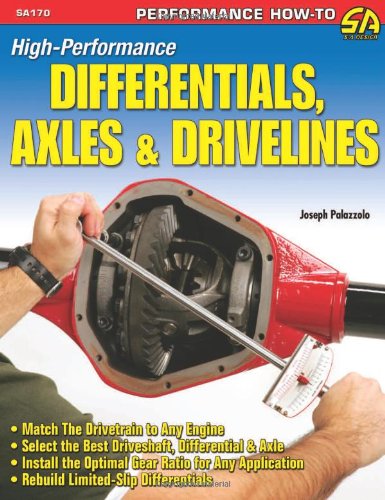
All too often, when an enthusiast builds a high-performance engine, swaps a more powerful engine into a car, or mounts sticky tires, the driveline components simply can’t handle the added torque and fail. In addition, differential, axles, and driveline parts have a limited life span under the power of a high-performance engine. Also, the proper gear ratios need to be selected and installed for maximum performance on the street, strip, or track. The performance of the driveshaft, differential, axle, and other driveline components needs to match the performance level of a particular engine, so maximum efficiency, longevity, and reliability can be realized.
This book covers everything you need to know about selecting the most desirable gear ratio, rebuilding differentials and other driveline components, and most importantly, matching the correct driveline components to engine power output. Learn how to set up a limited-slip differential, install high-performance axle shafts, swap out differential gears, and select the best available products for the driveline. This book covers the Chevy 12-bolt, Ford 8.8-inch, Dana units, and many other popular high-performance axles and rear ends. In addition, it explains rear differential basics, rear differential housings, rebuilding open rear differentials, limited-slip differentials, and factory differentials. Ring and pinion gears, axle housings, axle shafts, driveshafts, and U-joints are also covered.

Crammed full of all the things that made the original Chevrolet Inline Six-Cylinder Power Manual the bible for new and experienced six-cylinder engine builders, this updated version is a must-have for any serious inliner. From soup to nuts, when you want to build the Chevy six for more power and torque than the factory could ever imagine, there is only one book the experts turn to. And now the second edition is absolutely jam packed with the latest blueprints, interviews, airflow charts, build sheets, racer and “hot dog” profiles. Thought-provoking ideas will help you build the Chevy six your way!

From Abbott-Detroit to Zip, this unique reference book documents American gasoline-powered automobiles manufactured for the model years 1906 through 1915, the Brass Era. In these explosive early years of automotive history, a vast number of manufacturers–most of which failed within two years–produced a range of cars whose sheer diversity is unmatched in later times. The short corporate lifespans and constant change throughout the industry left a fragmented historical record, with data about specific models scarce and scattered in later sources. Here the basic facts of 4,000+ cars, painstakingly researched in all available period sources, are collected and trends of the era are analyzed.
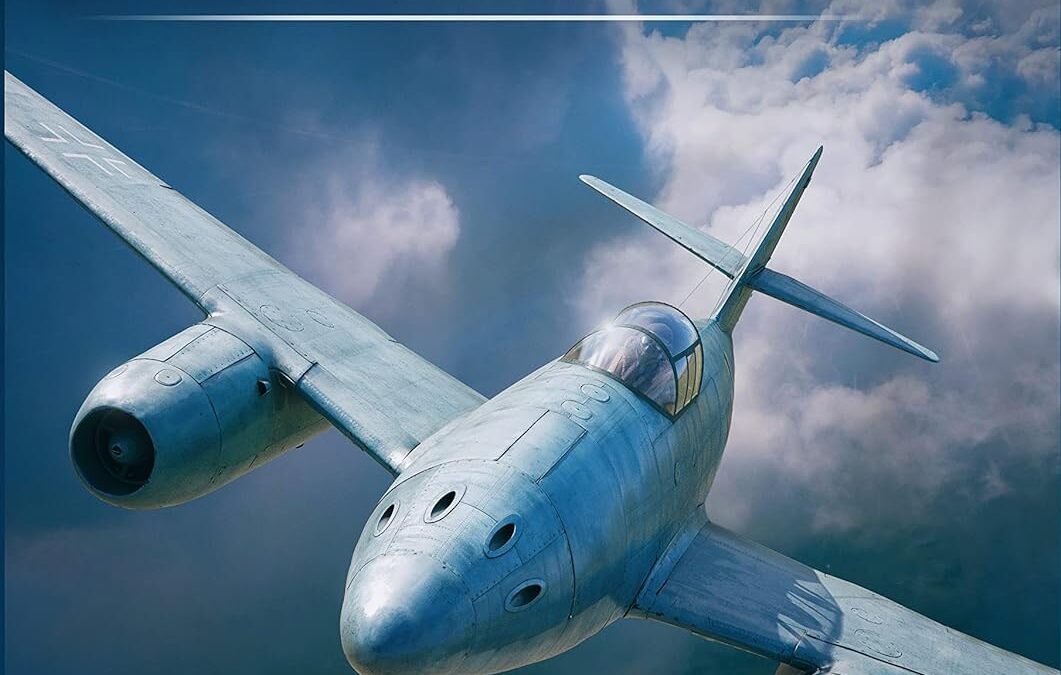
Dan Sharp examines the aircraft’s technical development in unparalleled detail as well as analyzing the ongoing discussions surrounding the Me 262 at the highest levels within the Messerschmitt company, the German Air Ministry and Adolf Hitler’s inner circle.
There are many myths surrounding the development of the Messerschmitt Me 262 jet fighter. Its unparalleled performance is beyond doubt; easily able to outpace its opponents and possessing the firepower to shred them in seconds. Yet immediately after the Second World War, rumours abounded that official indifference, technical shortcomings and interference from the Führer himself had crippled the Me 262’s progress and delayed its appearance on the front line until it was far too late.
Begun as a series of design concepts during 1938, the fighter would not enter mass production until the spring of 1944. Even then it failed to make any notable impact until the closing weeks of the war, when Me 262s began destroying USAAF bombers at an alarming rate. Exactly what happened to cause this apparently late start and who was responsible has until now been largely a matter of conjecture.
Grounded in research involving thousands of wartime documents spread across archival collections in three countries, Messerschmitt Me 262 Development & Politics finally sweeps aside the myths and provides a clear understanding of the real history. Sharp examines the aircraft’s technical development in unparalleled detail as well as analysing the ongoing discussions surrounding the Me 262 at the highest levels within the Messerschmitt company, the German Air Ministry and Adolf Hitler’s inner circle.

Celebrate and explore 100 years of MG cars with this impressive volume featuring expert commentary, historical images, period ads, and contemporary photography.
For many car enthusiasts, MG is synonymous with “sports car.” It is often credited with igniting a passion for European cars in postwar America at a time when roads were otherwise filled with the lumbering output of Detroit. In MG’s native England, the company’s cars filled roles from family transport to competition driving.
MG, as we think of it today, began in the 1920s, but its roots go back even further with a young William Morris. Initially working in the booming bicycle trade, he eventually branched into motorcycle and car repair with the fledgling Morris Garage (hence, MG) in 1907. By the mid 1920s, the successful Morris Garages was in a position to begin manufacture of its own cars under the MG name.
MG grew significantly in the years before World War II, building and racing its classic Midgets and Magnettes. World War II provided challenging times for the company as it did for the UK and much of the world. In the postwar period, a focus on sales outside England, and particularly in the United States, both defined MG’s product line and ensured its success. Legendary cars followed, including MG TC, TD, and TF followed by thoroughly modern MGA, MGB, MGB GT, and Midget. Magnettes and the 1100 offered options for those wanting sedans and more practical cars.
MG ownership moved through a number of UK companies in the postwar period as well as ownership by BMW and today’s SAIC, a Chinese-based company through which it operates as MG Motor. Highlights along the way included the MGB GT V8, MG Metro Group B rally car, and MGF. Based on its latest state-of-the-art EV platform, MG will soon launch an all-new roadster coming full circle over its century in business.
Authored by marque expert David Knowles, The MG Century: 100 Years of Safety Fast! is a fitting celebration of one of the automotive world’s oldest and most beloved brands—and a must-have for every car enthusiast.
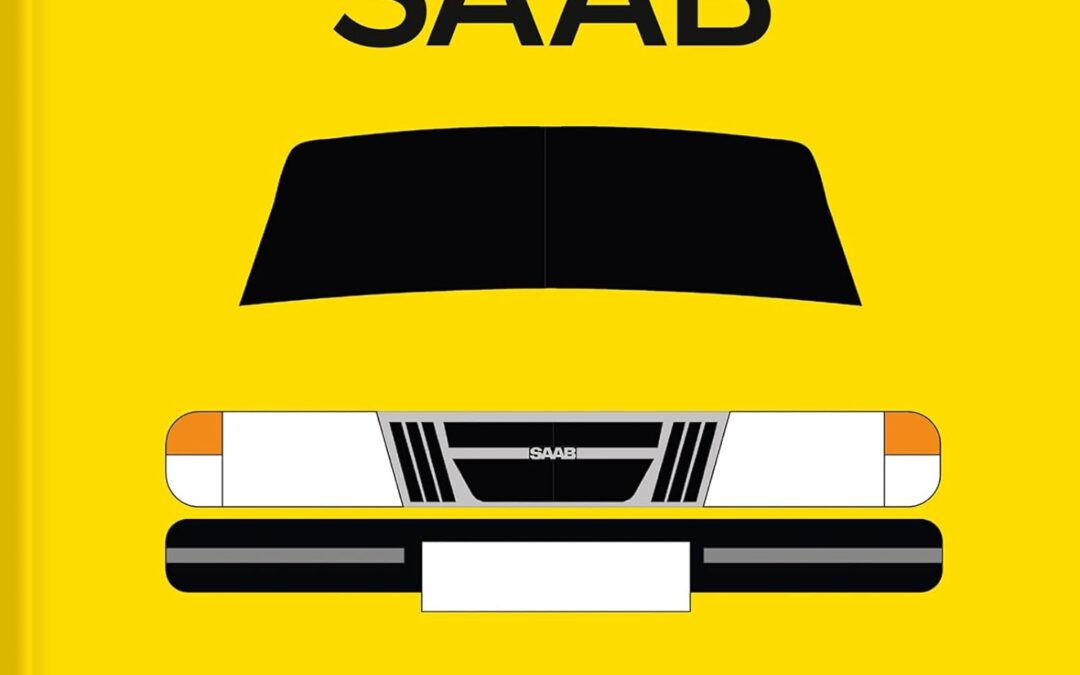
Fifty evocative photographs of classic Saab models paired with lively text that shows beyond all doubt why you should want to own one.
Saab is a byword for style, performance, quality, and safety—the cars have a reputation for reliability and solidity, along with classic Scandinavian design that particularly appeals to people in the creative professions. Although production ceased in 2011, Saabs are still highly sought after by enthusiasts and collectors.
This fascinating book outlines all the classic Saab models, from 1949’s Saab 92 to the last cars to drive off the production line in the early 2010s, including iconic rally cars of the 1960s and ’70s and the best-selling Saab 900, with glorious vintage photographs and insightful explanation from Saab superfan Vaughan Grylls.
This book is the perfect gift for the car nut in your life, whether they’ve owned a Saab or not, and sums up everything that’s great about this truly classic brand.

The story of a boy with a big four-wheel dream
There are men who fall in love with a dream when they are young and do everything they can to make it come true. Romano Artioli is an entrepreneur pursuing his desire to revive the world’s most prestigious automobile brand, Bugatti. With passion and dedication, he achieves this goal. Born in Mantua, birthplace of Nuvolari, the most famous race car driver of all time, Romano opens his first auto service centre in Bolzano at the age of eighteen, buys a hydraulic test bench and begins overhauling engines, immediately demonstrating great skill.
And he founds dealerships, imports cars and becomes president of the local automobile club. He understands the importance of going all out to meet the demands of his customers, who become his friends and help him sell cars.
He convinces Enzo Ferrari to entrust him with management of the brand not only in the Triveneto, but in southern Germany as well.
After amassing experience for years travelling the world, it’s time for him to make his boyhood dream come true: he charms the French government and arranges for the sale of the Bugatti brand.
Then, having been abruptly prevented from selecting a powerful partner among the many who were interested in developing Bugatti and ensuring its future as an independent brand, he acquires the crisis-ridden Lotus Group and rapidly restores it to its former grandeur.
There, he introduces new models with great success, such as the special Lotus Elise, named after Romano’s young granddaughter.
Exploiting the unique untapped potential of his technicians, who work with passion and total commitment. In the mid-nineties, the Bugatti EB 112 is named “the world’s most beautiful sedan”.
But as in a classic thriller, just when everything seems to have turned out right comes the sneaky and unexpected twist that changes everything. With endless twists and turns and a long line of bankers’ traps, lawyers’ scams and ravenous businessmen, Bugatti & Lotus Thriller tells the story of a great dream of genius and creativity that stirs passion in every petrolhead the world over.
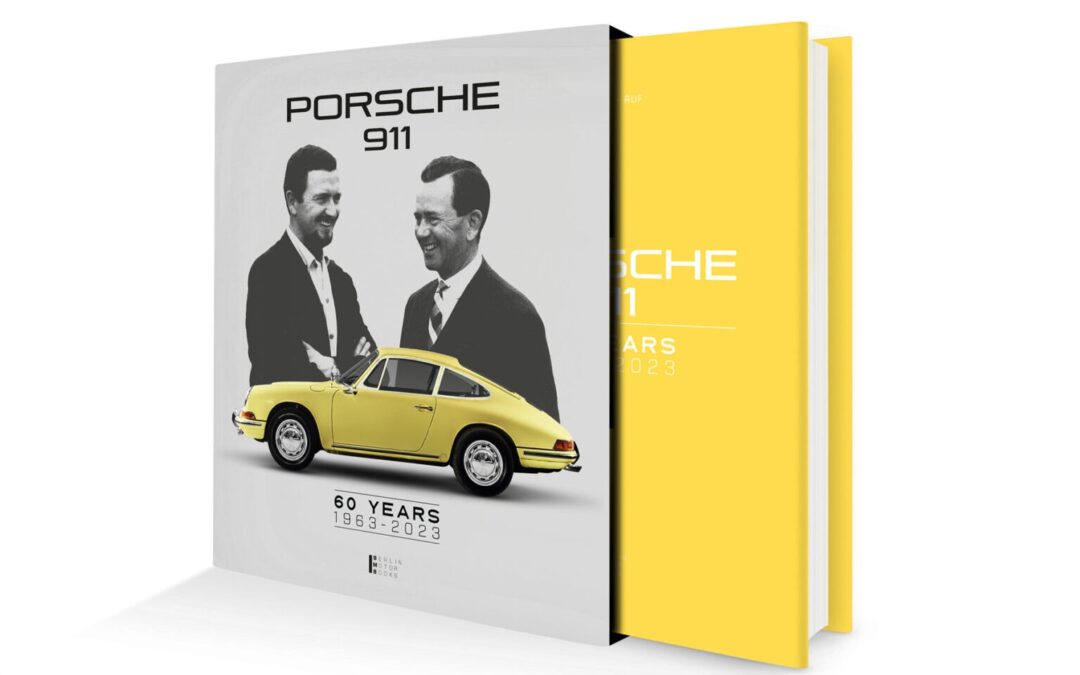
To mark the 60th anniversary of the Porsche 911, Berlin Motor Books has published the book PORSCHE 911 60 YEARS 1963-2023, limited to 911 copies.
Special features in this book
- Limited to only 911 units
- Each copy is individually numbered
- Detailed purchase advice and price trends
- Detailed presentation of all 82 Porsche 901 from 1964
- Extensive information on all 901 prototypes
- All colors of the Porsche 901 and 911 2.0 (Ur-Elfer)
- Unpublished historical visual material
The nine-eleven has been in production for over 60 years!
More than 60 years have passed since the Porsche 911 was presented at the Frankfurt Motor Show in September 1963, still as the Type 901. If things keep going this way, the Porsche 911 will surpass the 65-year production run of the VW Beetle (1938-2003). The book “Porsche 911 -60 Years” takes an in-depth look at how a small team of employees was able to create a sports car legend that is still unmatched today.
Interviews with the most important developers of the Porsche 911
All the important contemporary witnesses to the development of the 911 have their say in detailed interviews, including visionary Ferry Porsche, who came up with the only sensible concept for the successor to the 356.
And, of course, a detailed conversation with F.A. Porsche, under whose direction this century-old design in automotive engineering was created, is not to be missed.
Porsche engineering legend Hans Mezger reports on the development of the 911 engine, but Helmuth Bott, Peter Falk and Herbert Linge also provide intensive insights into the exciting period of 911 development.
All 82 Porsche 901 from 1964 are presented
In addition to interviews with contemporary witnesses, the book presents unpublished color photographs of the 901 presentation tour in 1963 and 1964. In addition, all 82 Neunelfer models that rolled off the production line as the Type 901 at the start of series production can be presented in detail for the first time.
The story of the 901 prototype quick blue is told
The book also takes an in-depth look at the first sales brochures and the color palette of the original 911. The book is rounded off by a detailed buying guide, which “Mr. 901”, Alois Ruf has created exclusively. There is probably no other expert in the world who knows more about the Porsche 901 prototypes and the very early 911s. Alois Ruf also owns the oldest Porsche 911 ever and reveals in an interview how he came to own this sensational one-off.
Oversize hardcover in slipcase
Text in English and German



















